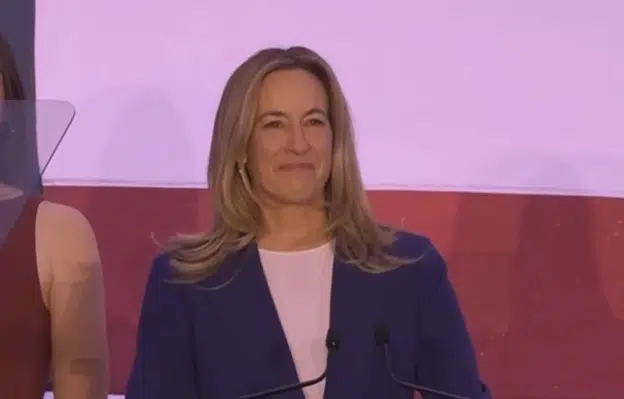On Nov. 11, the 12-nation Trans-Pacific Partnership (TPP) trade pact died a quiet death as the Obama administration abandoned efforts to pass the trade deal during the lame duck session of Congress, the Wall Street Journal reports.
The problem? Donald Trump won the election by taking away Pennsylvania, Ohio, Michigan and Wisconsin from Democrats in the electoral college, denying Hillary Clinton the presidency. That was a combined 64 electoral votes, comprising the bulk of Trump’s win, and without which Democrats cannot hope to reclaim the White House anytime soon.
Trump did it by campaigning against the TPP and other unpopular trade deals like NAFTA and China’s entry into the World Trade Organization and being granted permanent normal trade relations. After years of implementation by the Clinton administration and then under the Obama administration — which Congress just granted trade authority to — Trump was able successfully paint Democrats as the party of globalization and outsourcing.
Remarkably, even though Clinton had rescinded her nominal support for the TPP on the campaign trail — trying to stop the Democrat hemorrhaging of union household support — the Obama plan all along was to ram the trade deal through after she won the election.
“The White House had lobbied hard for months in the hope of moving forward on the pact if Mrs. Clinton had won,” reported the Journal.
Which makes sense. A Trump loss would have been read as a repudiation of his trade position. That is, after Clinton was done fooling working class Americans that Democrats would stop these bad trade deals, Obama was going to push it through Congress over the holidays when nobody was looking. And then a President Clinton could sign its implementation into law later.
But the Trump win changed that entire calculation.
Got that, union households? Clinton was going to betray you. By voting for Trump in the Rust Belt, you helped him to defeat the TPP. Trump has not even taken office yet, and he’s already delivering on his campaign promises.
Finally fed up with being betrayed on trade, enough Democrats voted for Trump in the Rust Belt to make the difference. In Ohio, it was a crushing loss for Clinton, who lost by nearly 10 points — a 455,000 margin of victory. But elsewhere, the margins were relatively narrow. Less than 12,000 votes separated Trump and Clinton in Michigan, and just 27,000 in Wisconsin. In Pennsylvania, it was 68,000 votes.
That was Trump’s reason for winning — by picking up Democrat votes, particularly by union households.
Meaning the complete 180 by Obama and Democrats on trade is not merely heeding voters’ concerns, but a matter of pure political survival in states they cannot hope to win the White House without.
For Trump and the GOP, then, the opportunity now exists to go further and consolidate that electoral coalition, by delivering on the Trump trade agenda. That will mean bilateral deals where they make sense, renegotiating NAFTA or tearing it up, and working on an international monetary accord to deal with currency devaluations intended to boost exports once and for all.
For modern Republicans, who have been supportive of global trade deals, this is uncharted territory. It will be a bloody battle in the conference, with lines already being drawn. For example, House Ways and Means Committee Chair Kevin Brady (R-Texas) has already called for Trump to break his election campaign promise. “Don’t withdraw, renegotiate,” Brady said at a panel discussion of the Wall Street Journal CEO Council. “There is plenty that levels the playing field. Renegotiate. Fix the problems that exist today. Let’s find a way to move forward.”
Yet, understanding that Trump owes his presidency to those Rust Belt states who voted for him, precisely because he promised to kill the TPP, tells you why it had to die — and needs to stay dead. No zombie trade deals. And kill the other ones, too, that don’t serve U.S. interests.
The Congressional majority can be a vehicle for that agenda, or an obstacle. Here, Brady is signaling strongly that the House GOP will be an obstacle to the Trump trade agenda.
As a result, it seems likely Trump will need at least some Democrat votes in the House and Senate to get his agenda through — who will be desperate to deal with Trump on trade lest they lose the blue-collar vote for a generation.
And even then, Trump could run the table on trade in 2020 when it comes time to vote again. Because he’ll have done what Democrats have failed to do for decades, and that is to successfully govern — and win — on trade.
Robert Romano is the senior editor of Americans for Limited Government.







